Product
Enterprising & Innovative technology global company
Enterprising & Innovative technology global company
‘ECON’, the new brand name of Namheung’s asphalt additives.
Econ is abbreviation of Eco/Economic asphalt Chemical products of Namheung.
This product can be used for wide temperature range from 100℃ to 130℃. At the same time, economic benefits from energy saving and the reduction of greenhouse gas emissions are also achieved.
Warm-Mix asphalt additives of NH Corporation can lower the working temperature by 30℃ while maintaining the quality as good as hot-mix asphalt mixture.
This product can be used as Hot-Mix asphalt mixture, ECOM WM1-200PL has the function of anti-stripping.
| How to use | Storage | Physical properties | |
|---|---|---|---|
| Test item | Test result | ||
|
When applying ECON WM1-200PL, utilizing a specially designed feeding device can be very good for workability. |
Please keep at 0 ~ 30℃ |
Amine value | 85~115mgKOH/g |
| Viscosity(25℃/CPs) | 1000 ~ 3000 | ||
| Specific gravity(25℃) | 0.93 ~ 0.99 | ||
| Appearance | Yellow, liquid viscous | ||
| Flash point | > 190℃ | ||

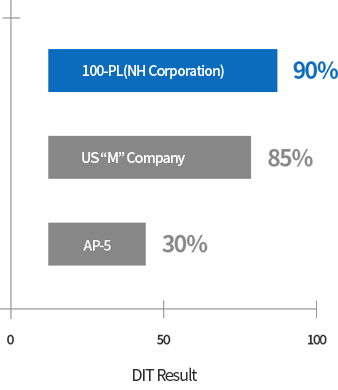

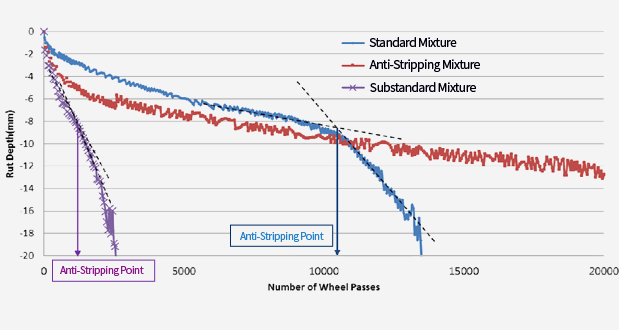

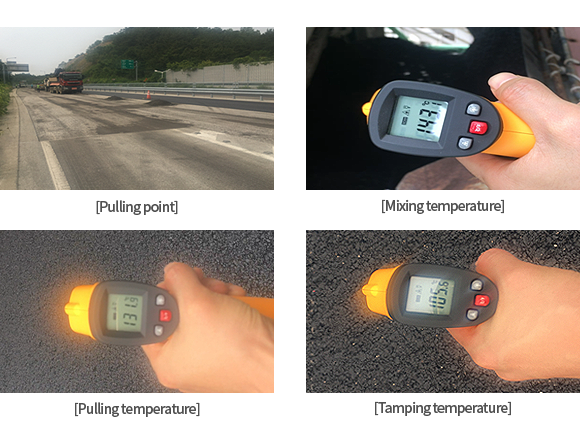
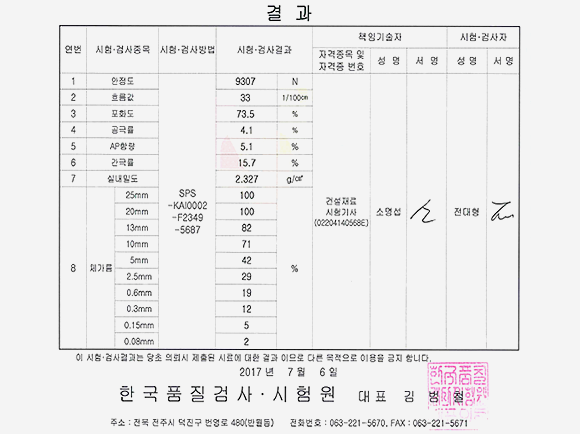
1. ConstructionSite : Mae Chun ro.(Tae-Jeon Highway) to Chil-Gok TG (150M) / 100ton of Warm-Mix asphalt concrete
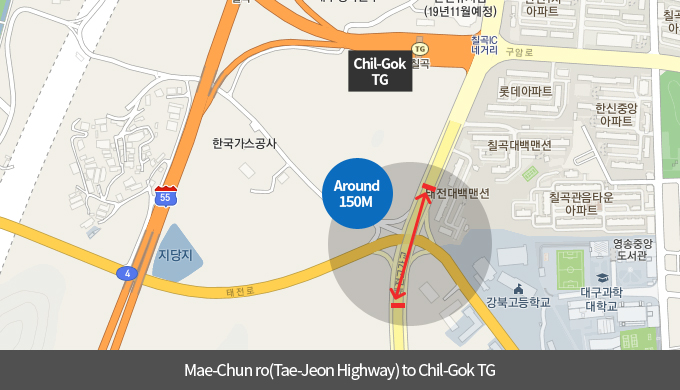
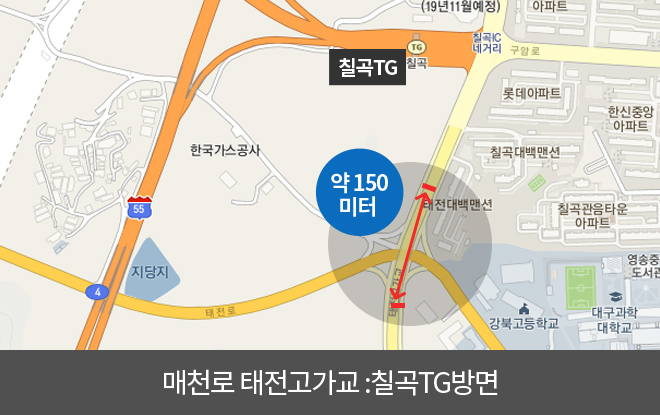
2. ConstructionSite : Seo Byun Nam ro.(North Daegu IC) to Shin Cheonro (300M) / 200ton of Warm-Mix asphalt concrete
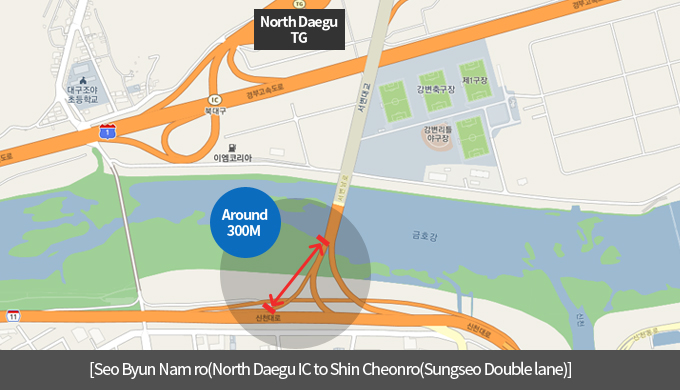
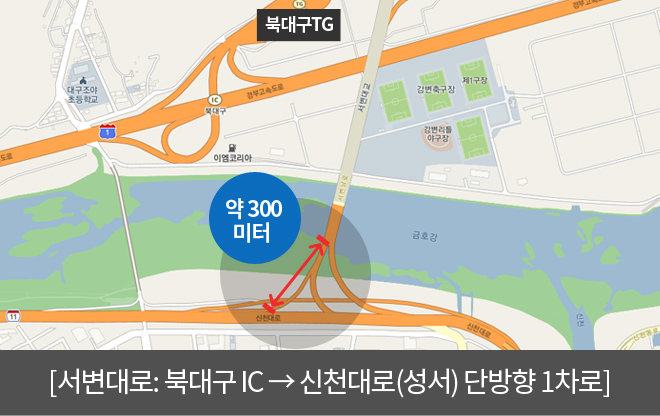
3. Construction details : Construction company(Yoon-Sung ASCON Corp) / Construction : Manufacturing asphalt concrete with PG 64-22. Put Warm-Mix additive into the mixture. The mixture is manufactured on 135℃. Pulling temperature was 115℃. (Commonly manufacturing temperature is 160℃ and pulling temperature is 140℃.)

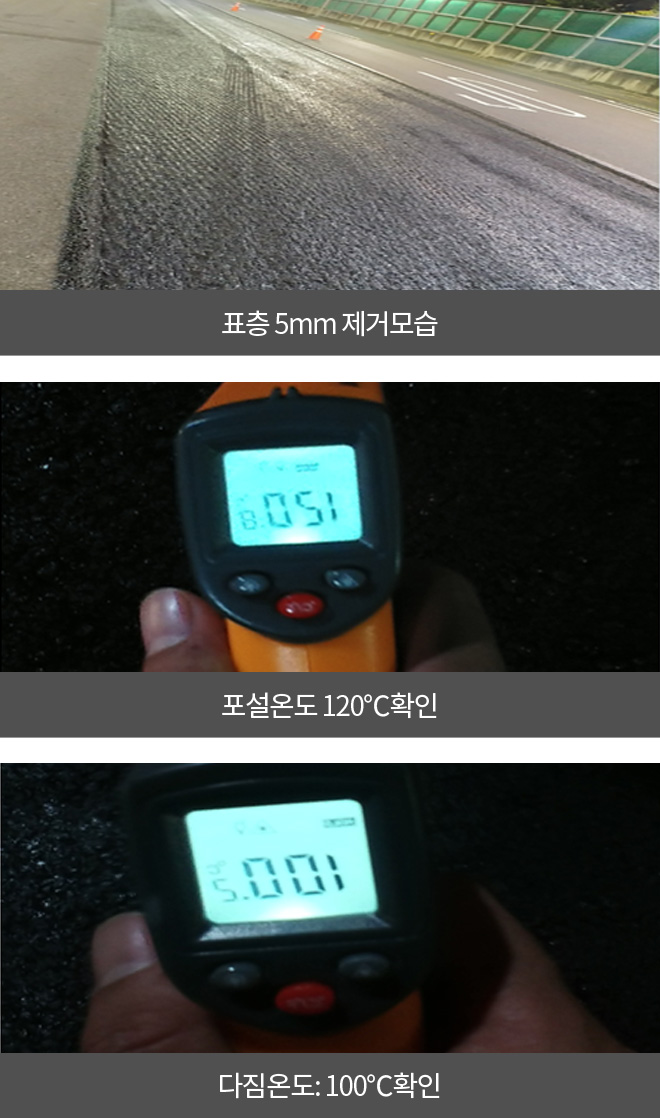
- The pulling site, where has big traffic is chosen by Daegu Metropolitan Facilities Management Corp. The reason is Warm-Mix additive has a function of anti-stripping.
- Pulling time :: 6 hours 30 minutes.(Started at 22:00 on 24th, Ended at 05:00 on 25th)
- Amount of using Warm-Mix additive : 72Kg (Dosage : 0.6% of asphalt)
Reduce 30℃ of manufacturing temperature
Reduction of the hazardous gas exposure damage from workers
Shorten construction time and early traffic opening
Warm-Mix effect makes better compactness and better quality of asphalt concrete
Increased resistance to moisture and anti-stripping effect to inhibit occurrence of porthole
| Effluent Gas | HMA (Hot Mix Asphalt) | WMA (Warm Mix Asphalt) | Reduction Ratio(%) |
|---|---|---|---|
| CO2 | 3.2 | 1.9 | 40.7(↓) |
| CO(ppm) | 983 | 262 | 73.4(↓) |
| NOx | 75 | 21 | 72(↓) |
| SOx | 60 | 35 | 41.7(↓) |
| Fuel(l/ton) | 9.3 | 6.3 | 32.3(↓) |
| Division | Liquid Warm-Mix additive (NH) | Powder Warm-Mix additive | ||
|---|---|---|---|---|
| Input Method | Plant mix | Needed injection equipment.(about $13,000), Input A/P measuring tank | Plant mix | Needed exclusive silo(around $40,000), Input Mixer |
| A/P Pre-mix | Applicable(Hyundai Oil bank, GSC : now on testing) | A/P Pre-mix | Non applicable | |
| Input | 250 ~ 300g per 1ton of asphalt concrete (0.5% ~ 0.6% of A/P) | 1KG per 1ton of asphalt concrete | ||
| Economic feasibility | Price : 9,000won/KG, Price per ton : 2,250~2,700won | Price : 3,100won/KG, Price per ton : 3,100won | ||
| Working environment | Reduction effect of 77% fine dust | Powder state with lots of dust Poor working environment | ||
| Usability | Ease of use when applying to Pre-mix | None applicable to A/P Pre-mix | ||
| Performance | Liquid type additive has better jet force than powder type. When pave road with liquid type shows excellent performance.Warm mix and Anti-Stripping effects. | Powder type has worse get force than liquid type.When pave road with powder type shows performance degradation. There is no Anti-Stripping effect. | ||